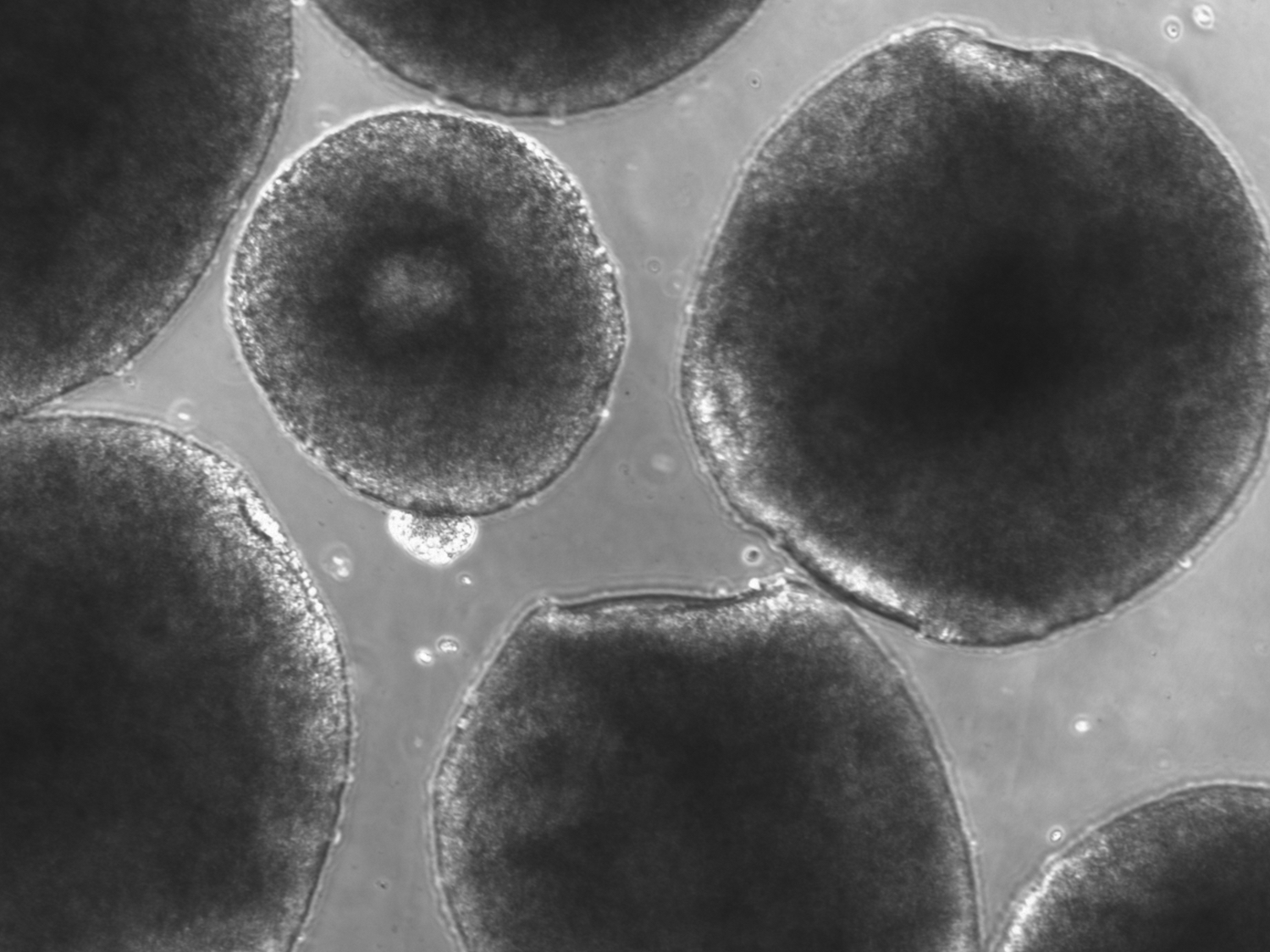Mini Neanderthal Brains Are Growing in Petri Dishes
Neanderthals went extinct about 40,000 years ago, but thanks to cutting-edge science, there is now a lab in California that has petri dishes filled with pea-size versions of the cavemen's brains.
Why are researchers cultivating and studying these mini brains? The reason, they say, is that these small neural lumps may reveal why Neanderthals died out and Homo sapiens went on to conquer much of the planet.
"Neanderthals are fascinating because they shared Earth with us, and there is now genetic evidence we actually bred with them," study leader Alysson Muotri, director of the University of California, San Diego (UCSD) Stem Cell Program, told Live Science. [11 Body Parts Grown in the Lab]
Perhaps genetic differences between Neanderthal and human brains explain their demise and our success, Muotri said. In other words, it's possible that humans achieved great technological advancements because we have sophisticated neural networks, while Neanderthals didn't.
Muotri presented the research, which has yet to be published in a peer-reviewed journal, at a UCSD conference called Imagination and Human Origins on June 1.
Building a brain
To investigate, Muotri and his colleagues compared the genome of Neanderthals (previously extracted from fossil bones and sequenced by other researchers) with that of modern humans. Out of 200 candidate genes that showed significant differences between the two species, the researchers decided to focus on just one: a master gene expression regulator known as NOVA1.

NOVA1 is highly expressed during neurodevelopment and has been linked to neural conditions, such as autism and schizophrenia, Muotri said. The NOVA1 gene is remarkably similar in humans and Neanderthals — just a single base pair (or pair of DNA "letters") is different between the two.
Sign up for the Live Science daily newsletter now
Get the world’s most fascinating discoveries delivered straight to your inbox.
Scientists have already grown mini human organs, known as organoids, in the lab. To grow mini Neanderthal brains (which the researchers playfully called Neanderoids), they used the gene-editing tool known as CRISPR to "Neanderthalize" human pluripotent stem cells, or immature cells that can develop into any cell in the body, Muotri said.
Then, using their in-house protocol, "we coaxed the stem cells to become a brain organoid," a process that takes between six and eight months, Muotri said. Now fully grown, the Neanderoids measure about 0.2 inches (0.5 centimeters) in size, "so you can actually see them with the naked eye once they are mature," he said.
The mini brains can't grow larger because they aren't vascularized, meaning they don't have a blood supply. Rather, the mini brain cells (there are up to 400,000 per brain) receive nutrients by diffusion.
"It is possible that in the future we could grow a bigger organoid," Muotri said. "We are working on this by creating bio-printed artificial blood vessels inside them."
Stark differences
Human lab-grown brains are generally round, but the Neanderoids were not. Instead, the Neanderthal mini brains had elongated tubular structures that gave them a popcorn-like shape," Muotri said.
Some of the Neanderoid cells also migrated faster from the source during development, which could explain the unusual popcorn formation, he noted. [3D Images: Exploring the Human Brain]
Moreover, Muotri added that the Neanderoids didn't have as many synaptic connections, or connections between neurons, and had altered neuronal networks. These features look similar to human mini brains grown from people with autism, he said. However, it's hard to say what this similarity means, if anything, he said.
"A correlation does not mean they are similar," Muotri said. "We can only speculate about this at this stage."
However, the research is still in the early stages, and it's important to note that the project has a few limitations, said Svante Pääbo, director of the Max Planck Institute for Evolutionary Anthropology in Leipzig, Germany, who was not involved in the research.
"Organoids are far from being able to tell us how adult brains function," Pääbo told Science magazine. He and his colleagues are also working on making mini Neanderthal brains, and the method can sometimes introduce unintended mutations, Pääbo said.
Even so, with controlled experiments "I'm quite hopeful we'll overcome those doubts," Pääbo told Science Magazine, adding that he hopes to compare Neanderoids with mini brains created from chimpanzee or human cells.
What's next
Muotri's team is now tackling another sci-fi-like challenge. They have devised a way for robots to measure electrical brain signals sent by human mini brains. By connecting the robots with the mini brains, they hope to create a "learning feedback loop" that will help the brain direct the robot to explore its surroundings.
"Ultimately, we want to compare the Neanderthalized organoid [with the robot] to test its ability to learn," Muotri said.
In all, the organoid research may reveal which genetic variants are pivotal to human success. "By doing this systematically, we will learn what are the genetic alterations that made us uniquely human and why they were positively selected," Muotri said.
Original article on Live Science.

Laura is the archaeology and Life's Little Mysteries editor at Live Science. She also reports on general science, including paleontology. Her work has appeared in The New York Times, Scholastic, Popular Science and Spectrum, a site on autism research. She has won multiple awards from the Society of Professional Journalists and the Washington Newspaper Publishers Association for her reporting at a weekly newspaper near Seattle. Laura holds a bachelor's degree in English literature and psychology from Washington University in St. Louis and a master's degree in science writing from NYU.









